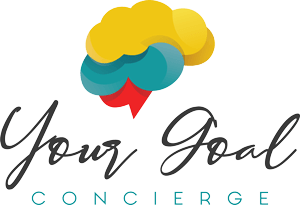Micro-Habits for a Healthier Mind
Erica Kesse
Tiny Tweaks, Big Impact: Micro-Habits for a Healthier Mind
In our demanding lives, the idea of overhauling our routines for better mental health can feel daunting. But what if profound positive change could stem from incredibly small, easily achievable actions? Welcome to the power of micro-habits – tiny tweaks to your day that, when practiced consistently, can cultivate a significantly healthier mind.
The Psychology of Small Wins
The beauty of micro-habits lies in their simplicity and the psychological boost they provide. Achieving even the smallest goal releases dopamine in the brain, reinforcing the behavior and making it easier to stick with. These "small wins" build momentum and create a positive feedback loop, gradually strengthening your overall mental well-being without feeling overwhelming.
5 One-Minute Mental Refreshers
Think you don't have time for mental health practices? Think again. Here are five micro-habits you can integrate into your day in just one minute:
1. The Mindful Breath: Take 60 seconds to simply focus on your breath. Notice the inhale and exhale, the rise and fall of your chest or abdomen. This anchors you in the present moment, offering a quick reset for your nervous system.
2. A Moment of Gratitude: Mentally list one thing you are genuinely grateful for. Savor that feeling for a minute. This shifts your focus to the positive, even amidst challenges.
3. The Gentle Stretch: Stand up and do a slow, gentle stretch for a minute – roll your shoulders, stretch your neck, or reach for the sky. Physical movement, even brief, can release tension and improve mood.
4. Sensory Awareness: Take a minute to fully engage one of your senses. Notice the taste of your coffee, the texture of your sweater, sounds around you. This brings you into the present moment and can interrupt racing thoughts.
5. A Positive Intention: Set a simple, positive intention for the next hour or the rest of your day. This can be as simple as "I will approach my next task with focus" or "I will be kind to myself."
Integrating Micro-Habits into Your Day
The key to making micro-habits stick is seamless integration. Try these strategies:
Anchor to Existing Habits: Link your new micro-habit to something you already do regularly. For example, take a mindful breath after you pour your morning coffee.
Set Reminders: Use alarms or visual cues to prompt your micro-habits, especially in the beginning.
Start Small and Be Consistent: Focus on doing the habit every day, even if it's just for the designated minute. Consistency is more important than perfection.
Overcoming Resistance to Small Changes
Even tiny habits can face resistance. If you find yourself skipping them, ask yourself why. Are they truly too time-consuming, or is there an underlying barrier? Be kind to yourself and adjust as needed. Perhaps a different micro-habit would feel more accessible.
Tracking Your Progress: The Power of Visual Reminders
While these habits are small, acknowledging your consistency can be motivating. Use a simple checkmark on a calendar or a note on your phone to track when you've completed your micro-habits.
Start with One Tiny Step
Nurturing your mental health doesn't require a dramatic overhaul. By embracing the power of tiny tweaks, you can gradually build a foundation for a healthier and more resilient mind. Start with just one micro-habit today and witness the surprisingly significant impact of these small, consistent steps.



